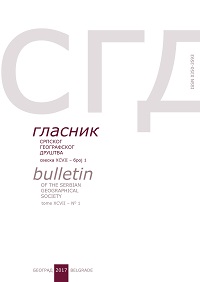The Challenges of the Urban Transport Strategy of Belgrade
The Challenges of the Urban Transport Strategy of Belgrade
Author(s): Miomir JovanovićSubject(s): Geomatics, Rural and urban sociology
Published by: Српско географско друштво
Keywords: Belgrade; spatial development; urban densities; metro; light rail systems;
Summary/Abstract: Belgrade’s main characteristics are: a) high densities, b) extremely high concentration of jobs in CBD and its central zone, c) very high level of usage of urban public transport and of pedestrian movements. According to the Newman - Kenworthy classification, Belgrade is a typical “public transport city”, while due to its transport strategy Belgrade can be best described as a hybrid of the Thomson’s “low cost strategy” (very high usage of buses) and “strong centre strategy” (high concentration of jobs in it’s CBD). This type of spatial development and urban transport strategy is extremely sensitive to the rise of personal motorization and automobile usage. Since in Belgrade: a) main mode of transport are buses, b) streets are very narrow, c) although public transport oriented, Belgrade doesn’t have rail systems with separated, “exclusive” right of way (metros, and light rail systems - traffic jams at Belgrade’s streets are extremely pronounced – number of vehicles per 1 km of streets is – 277 vehicles/km. Hence, Belgrade has four times more vehicles per 1 km of street network than Australian cities, two times more than metropolises of the USA and Canada, and 25% more than the West European and wealthy Asian cities. In short, Belgrade is (for a very long time) mature for a rail (metro or LRT) system, with completely separated, exclusive right of way, and much more strict private motor vehicles limitation strategy.
Journal: Гласник Српског географског друштва
- Issue Year: 93/2013
- Issue No: 3
- Page Range: 35-44
- Page Count: 10
- Language: English

